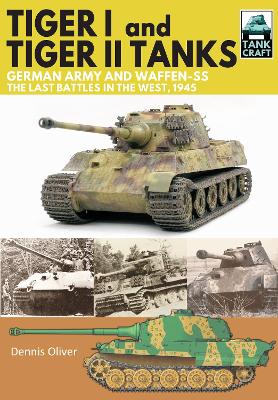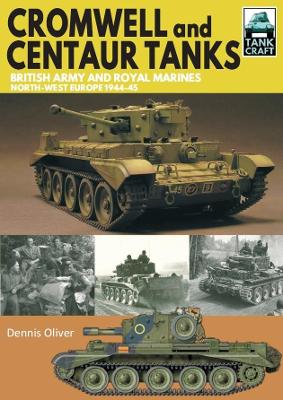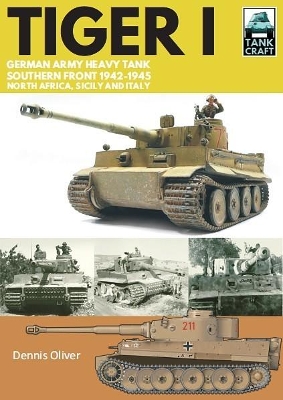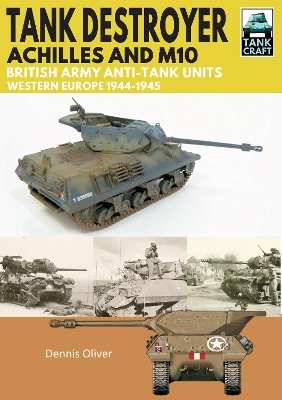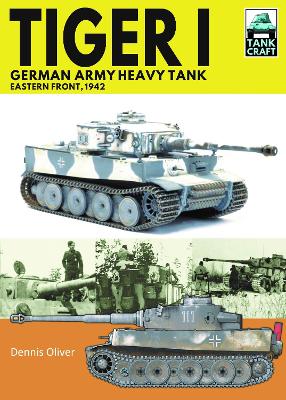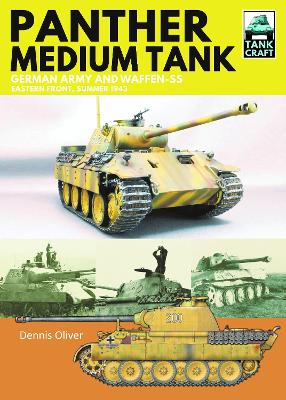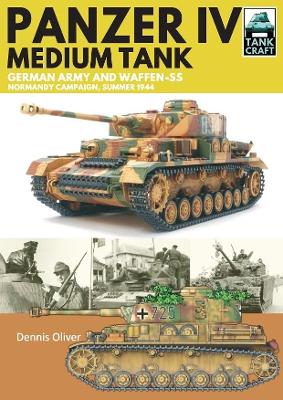Tank Craft
9 total works
Tiger I and Tiger II Tanks, German Army and Waffen-SS, The Last Battles in the West, 1945
by Oliver, Dennis
He uses archive photos and extensively researched colour illustrations to examine the Tiger tanks and units of the German Army and Waffen-SS heavy panzer battalions that struggled to resist the onslaught of Allied armour and air attacks during the last days of the conflict.
A key section of his book displays available model kits and aftermarket products, complemented by a gallery of beautifully constructed and painted models in various scales. Technical details as well as modifications introduced during production and in the field are also examined providing everything the modeller needs to recreate an accurate representation of these historic tanks.
So it is an ideal subject for Dennis Oliver's latest volume in the TankCraft series. He uses archive photos and extensively researched colour illustrations to examine the Panther tanks and units of the German army and Waffen-SS panzer battalions that struggled to resist the Allied onslaught.
A key section of his book displays available model kits and aftermarket products, complemented by a gallery of beautifully constructed and painted models in various scales. Technical details as well as modifications introduced during production and in the field are also examined providing everything the modeller needs to recreate an accurate representation of these historic tanks.
The lack of heavy armour was made up for by the tank's high speed provided by a Rolls-Royce Meteor engine. The Centaur was externally almost identical to the Cromwell, the major difference being the installation of the less powerful Liberty engine. While the Centaur equipped the Royal Marines during the Normandy battles, the Cromwell served until the end of the war and formed the basis for the Comet.
In his fifth book in the TankCraft series, author and illustrator Dennis Oliver uses official wartime photographs and comprehensively researched, exquisitely presented colour profiles to tell the story of the penultimate British cruiser tank. In common with all the titles from the TankCraft series, the large full-colour section features available model kits and accessories as well as aftermarket products.
In addition to the colour profiles there is a gallery of expertly constructed and painted models. A separate section explains technical details and modifications made during production and in the field, giving the modeller all the information required to recreate an authentic replica of one of the tanks that served from the Normandy beaches to the final battles in Germany.
In this, his second volume in the TankCraft series on the Tiger, Dennis Oliver uses archive photos and extensively researched colour illustrations to examine the Tiger tanks and German army units that first took them into combat in North Africa and then operated them as they fell back through Sicily and Italy between 1943 and 1945.
A large part of the book showcases available model kits and aftermarket products, complemented by a gallery of beautifully constructed and painted models in various scales. Technical details as well as modifications introduced during production and in the field are also examined providing everything the modeller needs to recreate an accurate representation of the tanks that made such an immediate impact on the southern front during the Second World War.
Sherman Tanks, US Army, North-Western Europe, 1944-1945
by Oliver, Dennis
Wartime photographs and carefully researched, exquisitely presented colour illustrations show in detail the types of Sherman - including the main variants - that played a vital role in Allied operations. As with all the books in the TankCraft series, a section of this work displays available model kits and aftermarket products, complemented by a gallery of beautifully constructed and painted models in various scales. Technical details as well as modifications introduced during production and in the field are also explained.
This book will give the modeller all the information and knowledge required to recreate an authentic miniature representation of the most famous American armoured vehicle of the Second World War.
Built on an adapted Sherman chassis, with sloped armour, an open-topped turret and powerful 17-pounder gun, it was designed to counter the threat posed by the formidable panzers deployed by the German army towards the end of the conflict, in particular the Panther and Tiger tanks.
The book covers the design and operational history of the Achilles in close detail, using rare archive photographs and meticulously researched colour illustrations, as well as a detailed, authoritative text.
A key section displays available model kits and aftermarket products, complemented by a gallery of beautifully constructed and painted models in various scales. Technical details as well as modifications introduced during production and in the field are also examined providing everything the modeller needs to recreate an accurate representation of these historic armoured fighting vehicles.
